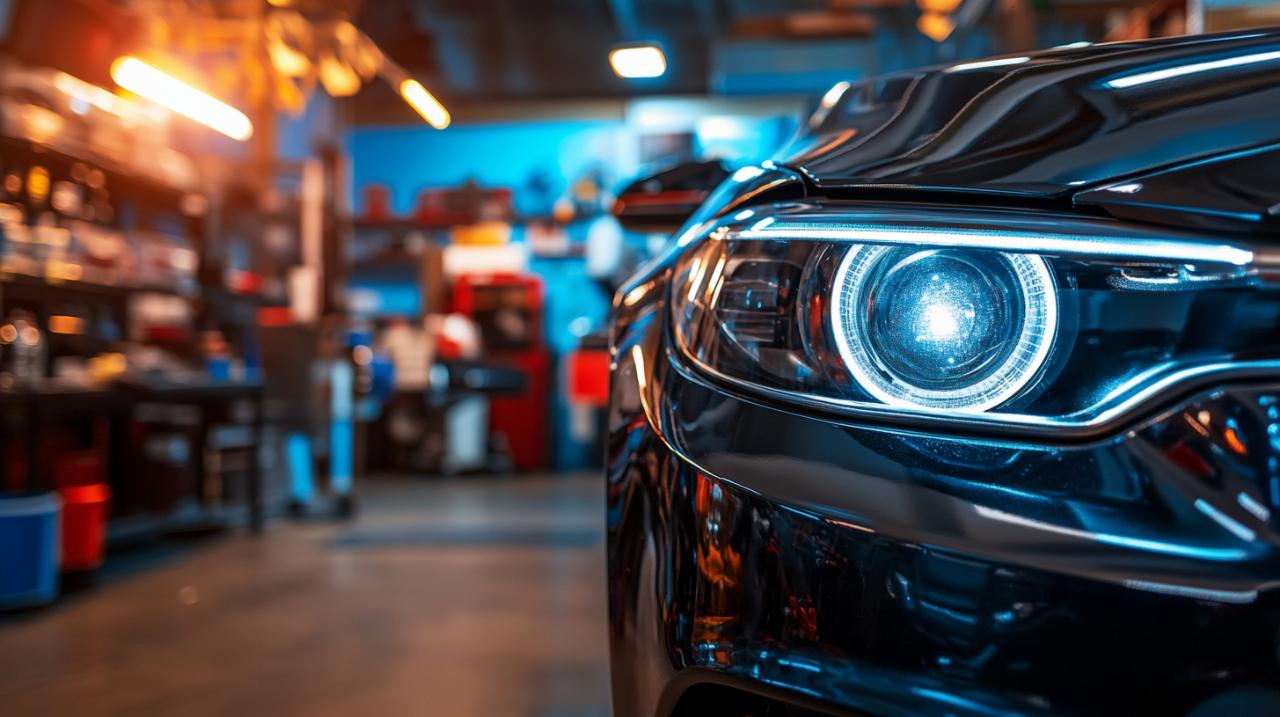Driving through the misty lanes and rain-swept motorways of the United Kingdom demands headlights that shine with clarity and purpose. Yet over time, the plastic lenses covering those vital lamps can cloud over, dulled by relentless exposure to ultraviolet rays, weathering, and everyday grime. When this happens, the temptation might be to replace the entire unit. However, restoring your headlights yourself is both cost-effective and surprisingly rewarding, transforming yellowed, opaque covers back to their original brilliance. This article explores how to navigate the market for restoration kits, ensuring you select a product that meets your vehicle's needs and the unique demands of British roads.
Understanding your headlight material and condition
Identifying polycarbonate headlight lenses
Modern vehicles almost universally feature polycarbonate plastic headlamp lenses, a material that has been in use for over four decades. Unlike the glass headlights of yesteryear, polycarbonate is lighter, more impact-resistant, and easier to mould into aerodynamic shapes. However, this material is also vulnerable to environmental degradation. Exposure to sunlight, road debris, and weather gradually wears away the protective coating, leaving the surface scratched, dulled, and eventually yellowed. Recognising that your headlights are made of polycarbonate is the first step in choosing the right restoration approach. Fortunately, nearly all restoration kits on the market cater specifically to this material, making compatibility less of a concern. What matters more is understanding the severity of the damage you are dealing with.
Assessing the Severity of Damage: Cloudiness Versus Yellowing
Not all headlight deterioration is created equal. Some lenses develop only a light haze or cloudiness, which can be remedied with minimal effort. Others exhibit deep yellowing, scratches, or even pitting, requiring a more intensive restoration process. Before purchasing a kit, take a close look at your headlights under natural daylight. If the discolouration is superficial and the surface feels relatively smooth, a simple hand-applied product with a single-step polishing compound may suffice. However, if the lenses are heavily tarnished or rough to the touch, you will need a kit that includes multiple grades of sandpaper to strip away the damaged layer before polishing. Determining the extent of damage upfront ensures you select the best headlight restoration kit option for your specific circumstances, saving both time and frustration.
Manual application versus drill-assisted restoration methods
Benefits and Drawbacks of Hand Polishing Kits
For those who prefer a straightforward, no-frills approach, hand-applied restoration kits offer ease of use without the need for power tools. These products typically come with pre-moistened wipes or polishing compounds applied with a soft cloth or applicator pad. Hand polishing is ideal for light cloudiness and can be completed in a matter of minutes per headlight. The Armor All Headlight Restoration Wipes, for instance, are a popular choice among British motorists, combining affordability with simplicity. Similarly, the QUIXX Headlight Restoration Kit delivers solid results without requiring a drill. The downside, however, is that manual methods may lack the abrasive power needed for severely degraded lenses. If your headlights are only mildly affected, hand polishing is both convenient and effective. But for deeper damage, the manual approach might leave you with underwhelming results, necessitating a more aggressive technique.
When to Opt for Power Drill Attachment Systems
For headlights that have suffered years of neglect, machine-assisted restoration is often the superior choice. Kits designed for use with a cordless drill feature attachments that hold sandpaper pads or polishing discs, enabling faster and more uniform abrasion. The Holts Headlight Restoration Kit, for example, is frequently recommended for badly tarnished lenses, provided you are comfortable operating power tools. The advantage of drill-assisted methods lies in their efficiency and the even pressure they apply, which can restore lenses to near-original clarity. However, these kits do carry a degree of risk. Excessive speed or pressure can damage the plastic further or even strip surrounding paintwork if masking tape is not applied properly. Therefore, if you lack confidence in using a drill, a hand-applied product may be the safer route. Conversely, if you are willing to invest a bit more time and care, the machine method can yield impressive, long-lasting results.
Essential Components to Look for in a Quality Kit

Evaluating polishing compounds and sandpaper grit ranges
The heart of any effective restoration kit is its abrasive materials. High-quality kits provide multiple grades of sandpaper, typically ranging from coarse grits such as 800 or 1000 through to finer options like 2000 or 3000. This progression allows you to gradually remove oxidation and scratches, smoothing the surface before the final polish. A comprehensive kit might also include wet sanding pads, which reduce friction and prevent overheating of the plastic, though dry sanding can be faster if you are in a hurry. The polishing compound itself should be formulated to restore clarity without leaving a hazy residue. Some products incorporate ceramic elements or advanced polymers that enhance transparency and durability. When comparing kits, scrutinise the included materials. A package that offers a full range of sandpaper grits, a quality polishing compound, and clear instructions will generally deliver superior results compared to budget options with limited components.
The critical role of uv protective sealants
No matter how effectively you polish your headlights, the restoration will be short-lived without proper ultraviolet protection. UV sealants form a transparent barrier that shields the polycarbonate from the sun's rays, which are the primary cause of yellowing and oxidation. Professional-grade kits often include a dedicated sealant as the final step in the process. Some brands, such as Cerakote, even offer ceramic coatings with limited lifetime warranties, emphasising the importance of this protective layer. In the unpredictable British climate, where overcast skies alternate with sudden bursts of sunshine, a robust UV sealant is essential. Without it, you may find yourself repeating the restoration process within months. Look for kits that explicitly mention UV protection or sealant in their contents. This small addition can make the difference between a temporary cosmetic fix and a lasting improvement to your vehicle's safety and appearance.
Selecting a Kit Suited to British Climate Conditions
Why uk weather demands robust uv protection
British weather is famously changeable, and while we may not experience the intense, year-round sunshine of warmer climates, UV exposure is still a significant concern. Even on cloudy days, ultraviolet radiation penetrates the atmosphere and degrades unprotected plastic surfaces. Headlights parked outdoors or frequently driven in varied conditions are especially vulnerable. As such, motorists in the United Kingdom should prioritise kits with proven UV protective capabilities. Products that offer ceramic coatings or multi-layer sealants provide enhanced defence against the elements. Some brands also advertise guarantees lasting several years, a testament to the durability of their protective formulas. Considering the frequency of rain and the prevalence of road salt in winter, a sealant that adheres well and resists washing away is crucial. Investing a few extra pounds in a kit with superior UV protection can extend the lifespan of your restoration by several years, reducing the need for frequent touch-ups.
Learning from Reviews by Fellow British Motorists
One of the most valuable resources when selecting a restoration kit is the collective wisdom of other drivers. Online platforms such as Amazon and automotive forums are filled with reviews from British motorists who have tested various products under real-world conditions. Pay attention to comments regarding ease of use, the clarity achieved, and the longevity of results. For instance, the Armor All wipes and the Holts machine-applied kit consistently receive high marks for effectiveness and value. Conversely, some budget options may receive criticism for lacking sealant or delivering only temporary improvements. Take note of any recurring issues, such as poor adhesion of sealants or difficulty in achieving even coverage with manual application. Reviews can also highlight unexpected benefits, such as kits that include masking tape or gloves, which simplify the process. By learning from the experiences of others, you can avoid common pitfalls and identify the products most likely to meet your expectations in the British context.




